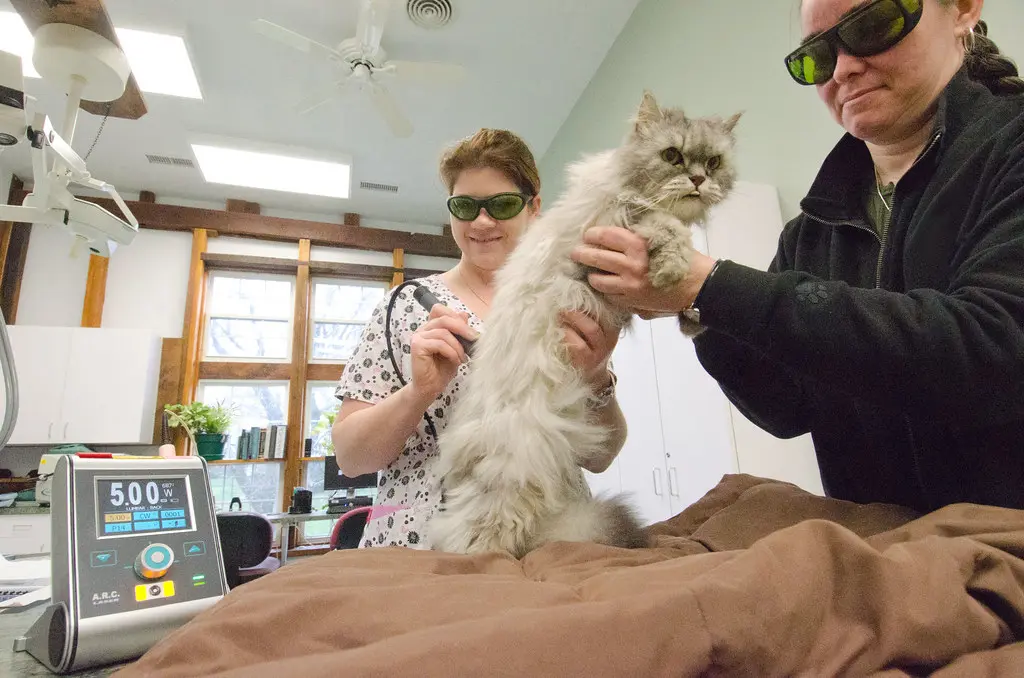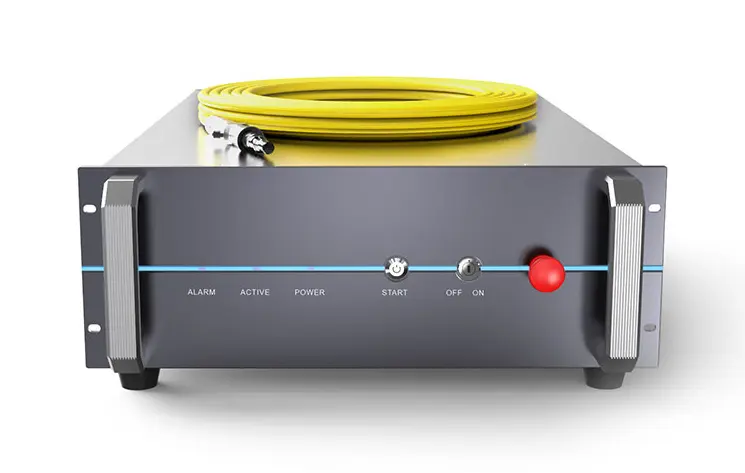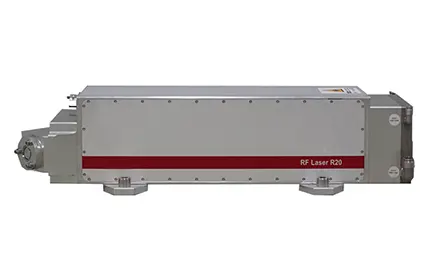
Therapeutic lasers are an increasingly popular tool used in veterinary medicine. Used similarly to acupuncture, massage therapy, and other alternative therapies, laser treatment can be used in conjunction with or in place of medication to manage pain, inflammation, and wound healing.
The most common applications for therapeutic lasers include muscular sprains and the resultant pain, osteoarthritis (laser treatment over joints and muscles that are painful), post-operative application around incisions, wounds (to stimulate and accelerate healing), and any situation in which the pet is experiencing musculoskeletal pain. Other applications include aiding in the healing of bone fractures, lick granulomas, tendon injuries, and as part of acupuncture treatments.
Most therapeutic lasers use red or near-infrared light, which has a wavelength of 600–1070 nanometers, although units with green, blue, and violet light, which have lower wavelengths, are becoming more popular. Laser beams of lower wavelengths are absorbed by superficial tissue, such as the skin, whereas beams of higher wavelengths penetrate deeper into muscles and bones.
Veterinary

Therapeutic lasers are an increasingly popular tool used in veterinary medicine. Used similarly to acupuncture, massage therapy, and other alternative therapies, laser treatment can be used in conjunction with or in place of medication to manage pain, inflammation, and wound healing.
The most common applications for therapeutic lasers include muscular sprains and the resultant pain, osteoarthritis (laser treatment over joints and muscles that are painful), post-operative application around incisions, wounds (to stimulate and accelerate healing), and any situation in which the pet is experiencing musculoskeletal pain. Other applications include aiding in the healing of bone fractures, lick granulomas, tendon injuries, and as part of acupuncture treatments.
Most therapeutic lasers use red or near-infrared light, which has a wavelength of 600–1070 nanometers, although units with green, blue, and violet light, which have lower wavelengths, are becoming more popular. Laser beams of lower wavelengths are absorbed by superficial tissue, such as the skin, whereas beams of higher wavelengths penetrate deeper into muscles and bones.
Veterinary
In veterinary medicine, lasers have become valuable tools for both surgical and therapeutic applications, improving treatment precision and animal comfort. Depending on the procedure, veterinarians typically rely on diode lasers, CO₂ lasers, and class IV therapeutic lasers.
Diode lasers are commonly used in everyday veterinary practice thanks to their versatility. They’re effective for soft tissue surgeries, dental procedures, and laser therapy aimed at reducing pain and inflammation.
For more delicate surgical work, CO₂ lasers are often the preferred choice. These lasers offer high precision with minimal bleeding, making them ideal for procedures involving the skin, oral tissues, and tumors.
When it comes to rehabilitation and pain relief, class IV therapeutic lasers are widely used. These high-power lasers penetrate deeply into tissue, promoting healing, circulation, and inflammation reduction—especially beneficial for treating chronic conditions like arthritis or post-injury recovery.
Each laser type serves a distinct role, tailored to the needs of the animal and the specific procedure. Whether it's a surgical incision or a therapeutic session, laser technology helps enhance outcomes and reduce stress for veterinary patients.
In veterinary medicine, lasers have become valuable tools for both surgical and therapeutic applications, improving treatment precision and animal comfort. Depending on the procedure, veterinarians typically rely on diode lasers, CO₂ lasers, and class IV therapeutic lasers.
Diode lasers are commonly used in everyday veterinary practice thanks to their versatility. They’re effective for soft tissue surgeries, dental procedures, and laser therapy aimed at reducing pain and inflammation.
For more delicate surgical work, CO₂ lasers are often the preferred choice. These lasers offer high precision with minimal bleeding, making them ideal for procedures involving the skin, oral tissues, and tumors.
When it comes to rehabilitation and pain relief, class IV therapeutic lasers are widely used. These high-power lasers penetrate deeply into tissue, promoting healing, circulation, and inflammation reduction—especially beneficial for treating chronic conditions like arthritis or post-injury recovery.
Each laser type serves a distinct role, tailored to the needs of the animal and the specific procedure. Whether it's a surgical incision or a therapeutic session, laser technology helps enhance outcomes and reduce stress for veterinary patients.




